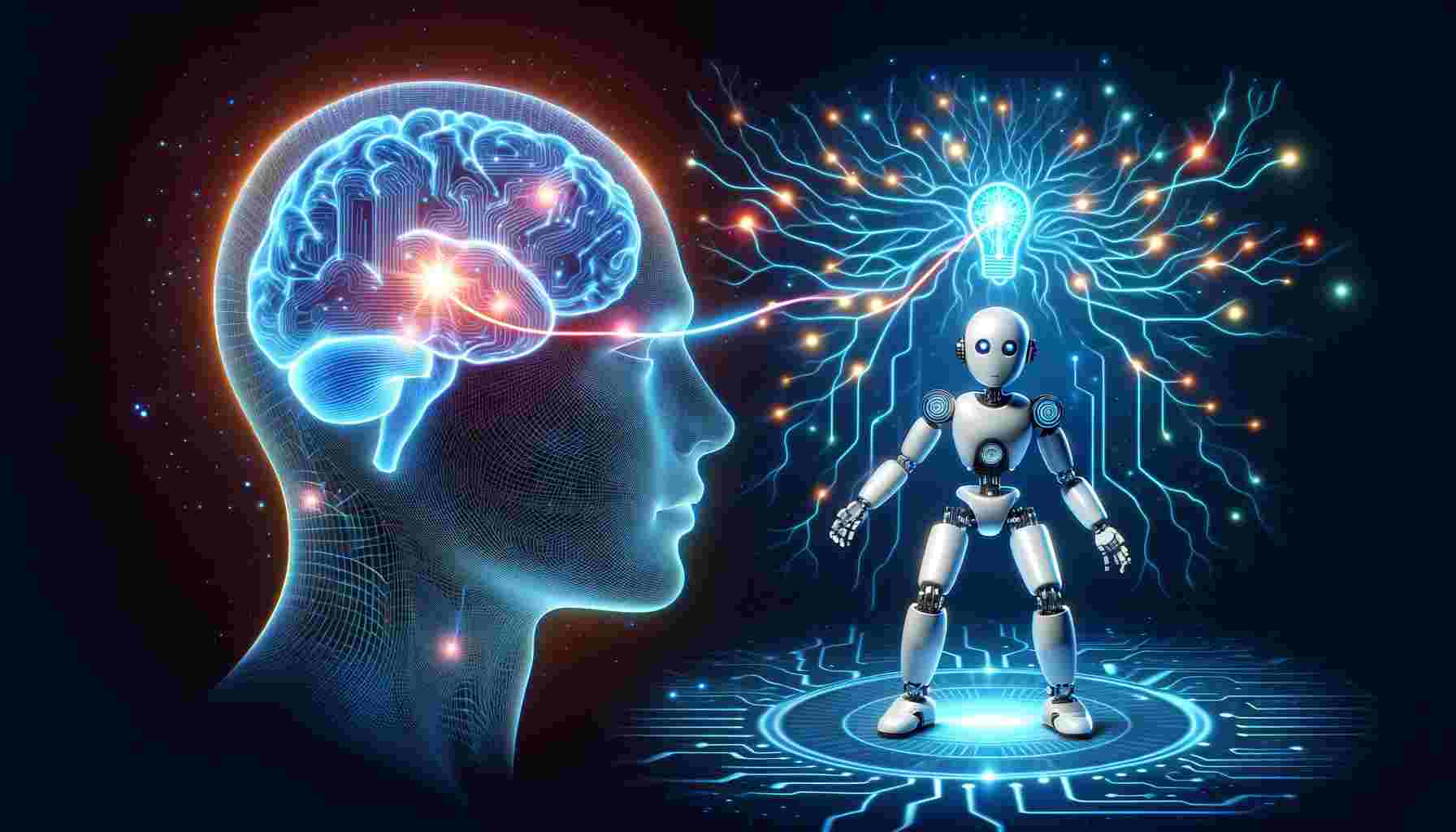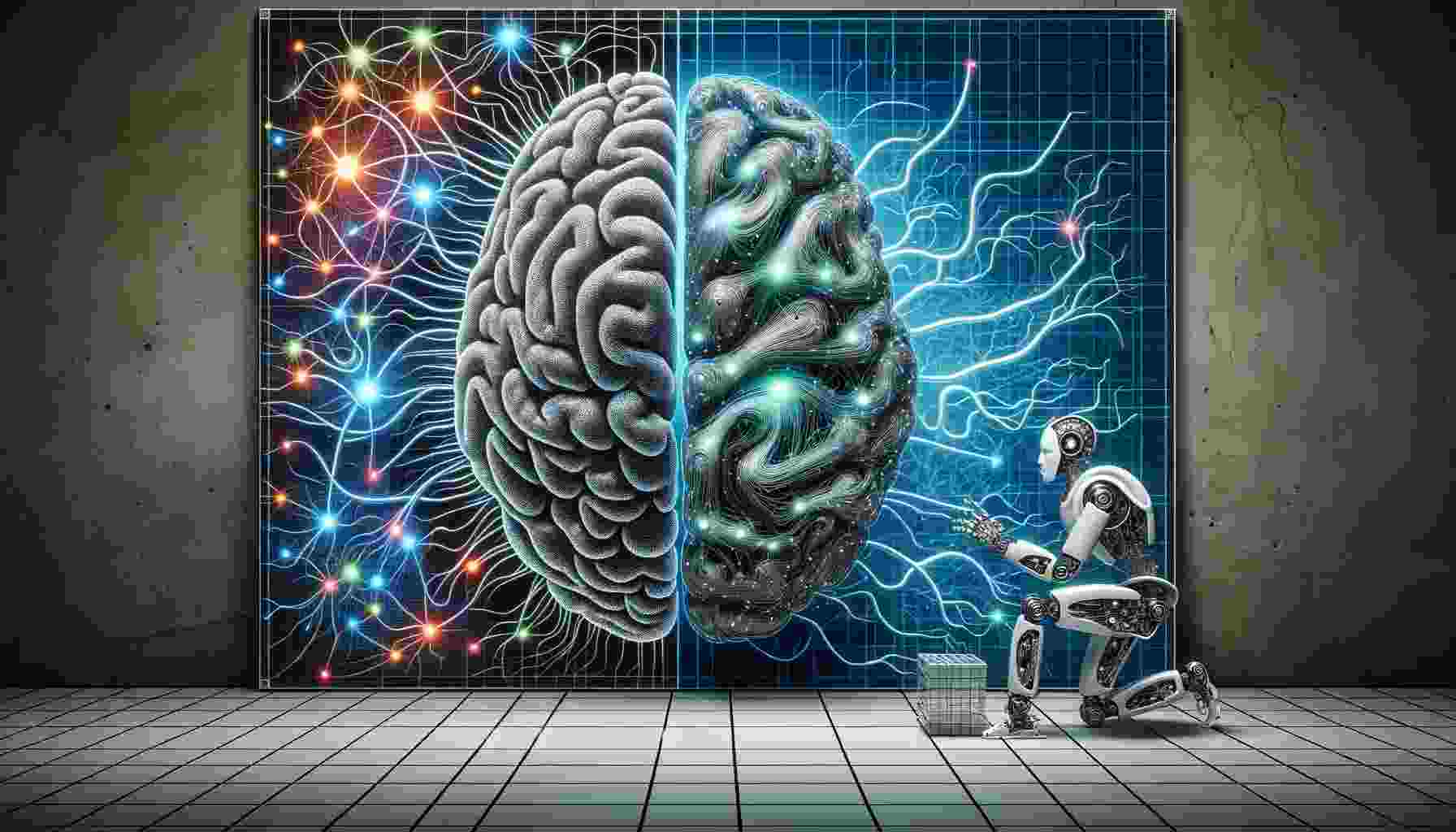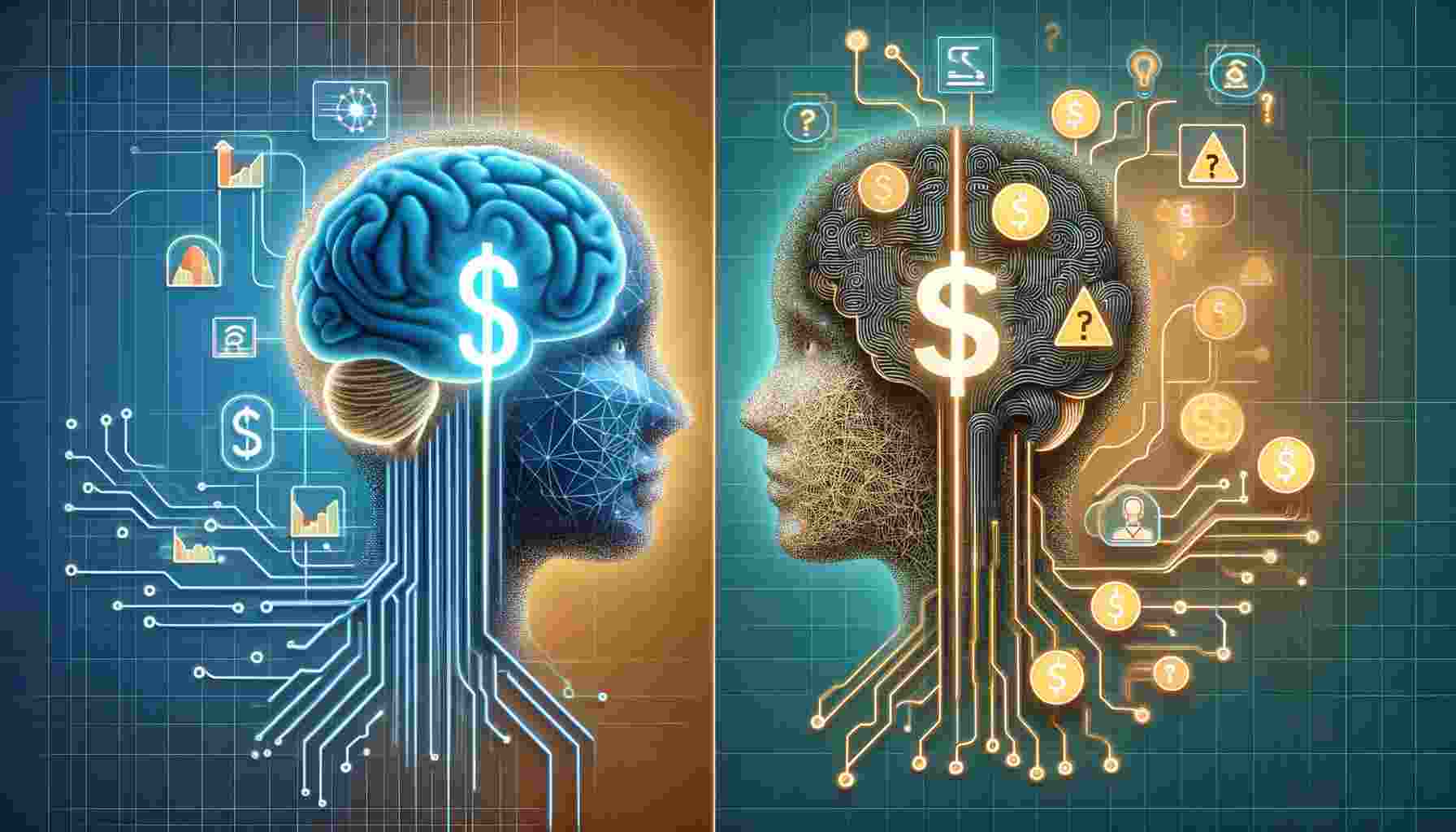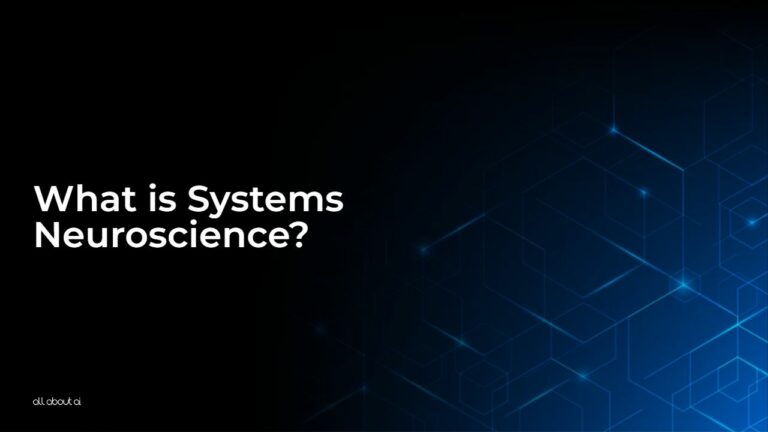What is systems neuroscience? It represents a pivotal area in the study of the brain’s complex structure and functions and is an interdisciplinary field, drawing from both biology and technology.
This field has become increasingly relevant in artificial intelligence (AI), where understanding brain processes can inspire and refine AI algorithms.
Looking to learn more about this topic? Keep reading this article written by the AI specialists at All About AI.
Systems neuroscience is like exploring a big, amazing puzzle called the brain. Imagine the brain is like a supercomputer in our heads. It helps us think, feel, and do everything we do. Now, systems neuroscience is a special kind of detective work where scientists become brain detectives. They try to understand how this supercomputer works. These brain detectives use clues from two main areas: biology, which is all about living things like plants, animals, and our bodies; and technology, which includes cool gadgets and computers. By using both, they can learn more about how the brain works.What is Systems Neuroscience? Brain Insights!
Exploring the Working Mechanism of Systems Neuroscience in AI
Systems neuroscience in artificial intelligence goes into cognitive mimicry, attempting to replicate human brain processes in machines. This involves analyzing neural activity and translating these insights into data processing methods for AI technology.
The goal is to create augmented intelligence systems that can perform tasks similar to the human brain, from simple pattern recognition to complex decision-making.
Here’s how systems neuroscience in AI works.
Step 1: Understanding Neural Circuits
In this initial phase, the focus is on comprehending neural circuits, the fundamental building blocks of brain processes.
Researchers study how these circuits allow the brain to process, store, and retrieve information, a key aspect of cognitive processing. This deep understanding of neural activity forms the basis for the next steps.
Step 2: Translating Brain Processes into AI Algorithms
The insights gained from neural circuits are then translated into AI algorithms. This step is pivotal in cognitive mimicry, where AI technology attempts to replicate the efficiency and adaptability of human brain processes in artificial intelligence systems.
Step 3: Simulation and Testing
Developed AI models, inspired by neural activity, undergo rigorous simulation and testing. These tests are crucial to ensure that the AI algorithms can effectively replicate human cognitive functions, a cornerstone of augmented intelligence.
Step 4: Refinement and Optimization
Post-testing, these AI algorithms undergo refinement and optimization. This stage is critical for enhancing the efficiency and accuracy of the AI systems, ensuring their ability to process information in a way that mirrors neural activity and cognitive processes.
Step 5: Application and Integration
Finally, the AI systems are integrated into practical applications. Here, the focus is on leveraging these systems in tasks where human-like cognitive processing can offer significant advantages, such as complex decision-making and problem-solving.
The Benefits of Systems Neuroscience in AI
Integrating systems neuroscience in AI offers numerous advantages. By understanding and mimicking neural circuits and cognitive processing, AI can achieve greater efficiency and accuracy.

Here are some of the benefits of systems neuroscience in AI.
1. Enhanced Cognitive Mimicry
Systems neuroscience allows AI algorithms to achieve a level of cognitive mimicry that closely resembles human cognitive processes, leading to more intuitive and effective AI technologies.
2. Improved Problem-Solving Abilities
AI algorithms, inspired by neural circuits, enable AI to tackle complex problems with human-like problem-solving abilities, enhancing the efficiency and versatility of AI solutions.
3. Advancements in Healthcare Technology
Systems neuroscience significantly impacts healthcare, especially in diagnosing and treating neurological disorders. AI technology can assist in early detection and personalized treatment plans, improving healthcare outcomes.
4. Breakthroughs in Learning Algorithms
The integration of systems neuroscience fosters the development of sophisticated learning algorithms in AI. These algorithms, inspired by neural activity, can adapt and evolve, mirroring the learning process of the human brain.
5. Ethical AI Development
With a deeper understanding of brain processes and cognitive mimicry, developers can guide AI development more ethically and responsibly, ensuring AI’s alignment with human values and ethical standards.
Challenges in Implementing Systems Neuroscience in AI
However, merging systems neuroscience with AI is not without its challenges. The complexity of brain behavior and the intricacies of neural circuits make accurate replication difficult.
Additionally, ethical considerations arise when mimicking cognitive processes, especially in applications that closely interact with human users.

Here are some challenges:
- Complexity of Brain Behavior: Accurately replicating the intricate behavior of neural circuits in AI algorithms is an immense challenge.
- Ethical Considerations: Mimicking human cognition in AI raises significant ethical concerns, especially in areas of privacy and autonomy.
- High Costs of Research: Systems neuroscience-based AI development requires significant investment in research and algorithm development.
- Interdisciplinary Collaboration Challenges: Effective implementation demands collaboration across multiple fields, adding complexity.
- Limited Understanding of the Brain: Our evolving knowledge of brain processes and neural activity limits the potential of current AI models.
- Risk of Overreliance: There’s a concern that reliance on AI for cognitive tasks might lead to diminished human cognitive abilities.
Implications of Systems Neuroscience in AI
The implications of systems neuroscience in AI are vast. This integration promises advancements in understanding brain behavior and in developing AI that can seamlessly interact with human cognitive processes.
It also poses questions about the future of AI technology and its role in society, especially concerning autonomy and ethical use.
Revolutionizing AI Capabilities
The integration of systems neuroscience in AI promises to enhance AI capabilities, particularly in areas like data processing and cognitive mimicry.
Impact on Employment and Skills
Advancements in AI, driven by insights from neural networks and brain behavior, will inevitably reshape the job market and demand new skill sets.
Ethical and Social Considerations
The blending of systems neuroscience and AI raises important ethical and social questions, particularly regarding the extent to which AI should replicate human cognition and decision-making processes.
Advancements in Healthcare
Systems neuroscience could lead to significant advancements in healthcare, particularly in the understanding and treatment of neurological disorders.
Shaping Future Research
This field is setting the direction for future AI and neuroscience research, promoting a more integrated and interdisciplinary approach.
Pros and Cons of Implementing Systems Neuroscience in AI Development
The pros of implementing systems neuroscience in AI include enhanced cognitive mimicry and more efficient data processing algorithms.

However, there are cons as well, such as the high costs of research and development and potential ethical dilemmas in mimicking human cognition too closely.
Pros:
- Enhanced Human-like Cognition: AI systems become capable of complex cognitive processes akin to humans.
- Revolution in Healthcare: Potential to transform diagnostics and treatment in neurological disorders.
- Advanced Problem-Solving: Enables AI to effectively tackle complex, multi-dimensional problems.
- Dynamic Learning Processes: Facilitates the development of AI algorithms that can learn and adapt over time.
- Ethical AI Development: Promotes responsible and ethical AI development aligned with human values.
Cons:
- Significant Investment Required: Involves substantial financial resources for research and development.
- Ethical and Privacy Concerns: Raises questions about ethical boundaries and privacy in AI.
- Implementation Challenges: Difficulty in accurately replicating the complexities of neural circuits and brain behavior in AI.
- Job Displacement Risks: Advanced AI might replace human roles in certain sectors.
- Dependency on AI: Potential decline in human cognitive abilities due to overreliance on AI technology.
Future Directions in Systems Neuroscience and AI Research
The future of systems neuroscience and AI research is rich with possibilities. Here are some exciting future trends to look forward to.
Advanced Brain-Computer Interfaces
Future research will likely focus on developing more sophisticated brain-computer interfaces, blending systems neuroscience and AI for enhanced cognitive functions.
AI in Mental Health
AI, informed by systems neuroscience, holds great potential in mental health treatment, offering personalized therapeutic interventions based on understanding emotional and psychological states.
Quantum Computing in AI
Integrating quantum computing could revolutionize AI’s processing capabilities, enabling faster and more accurate decision-making.
Ethical AI Frameworks
The need for robust ethical frameworks in AI development will become more pronounced, ensuring responsible use and benefit to society.
AI in Education
Systems neuroscience could transform education through AI, providing personalized learning experiences adapted to individual cognitive processes.
Research in Neurological Disorders
One of the most promising areas of research lies in using AI to understand and treat neurological disorders, leveraging insights from neural activity and brain processes.
Start exploring the realm of artificial intelligence with our comprehensive glossaries, designed to cater to all proficiency levels, from beginners to seasoned experts. Utilize this guide as your indispensable partner in gaining a deeper insight into AI and its groundbreaking attributes.Want to Read More? Explore These AI Glossaries!
FAQs
Is AI based on neuroscience?
What is the combination of AI and neuroscience?
What are the three types of neuroscience?
Can AI simulate a human brain?
Is neuroscience computational?
Wrap Up
Systems neuroscience in AI represents a fascinating and rapidly evolving field. Its integration into AI technology promises not only to enhance AI capabilities but also to offer deeper insights into the human brain.
This article comprehensively answered the question, “what is systems neuroscience.” Here, we covered how it works, its implication in different fields, as well as its pros and cons. For information like this on a variety of AI topics, read the articles in our AI Language Guide.





